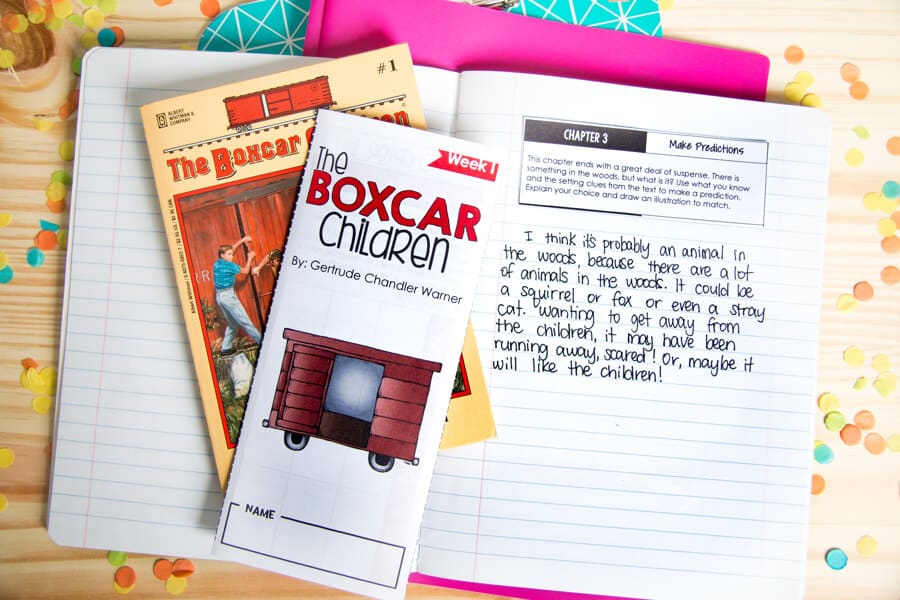How to Teach Character Analysis + Free Character Traits List Printable
Understanding character traits is such an important part of helping students really get what they read. When kids are younger, stories usually make it easy. They often tell us straight out that the main character is kind or brave.
As students move into longer, more complex texts, those clues become more subtle. They have to pay attention to what characters say, do, and feel to figure out who they really are. Once they can do that, they’re ready to explore how and why those characters change throughout the story.
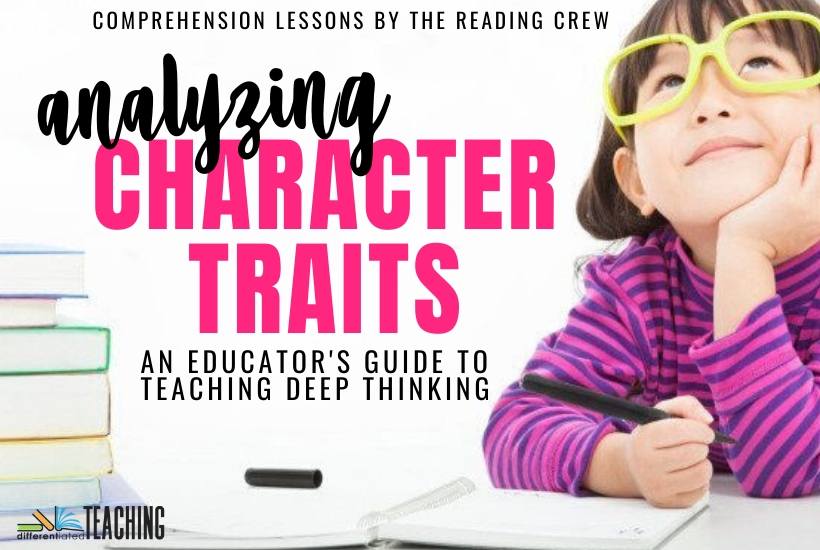
Building a solid understanding of positive and negative character traits sets the stage for bigger skills, like analyzing character change over time. When students can name traits and back them up with text evidence, they start to think more deeply about what makes each character unique.
In this post, I’ll walk you through ways to introduce and reinforce character traits, share examples you can use right away, and show how to help students use evidence from the text to support their thinking. I’ve also included some easy-to-use printables to make these lessons a breeze to teach.
Why teach character analysis?
Character analysis is such a great way to ease students into deeper thinking about literature. It helps them learn to notice what a character says and does, make inferences, and back up their ideas with evidence from the text.
Talking about characters is also an easy way to boost vocabulary. Students start picking up new adjectives to describe personalities, which they can then use when they write their own stories.
Best of all, character analysis isn’t a one-and-done skill. You can spiral it all year long, gradually raising the bar as students get more confident and capable readers.

Getting started teaching character traits
Identifying character traits is one of those core skills that sets students up for success with everything else in reading. Whether you’re teaching it for the first time or just looking to freshen up your lessons, I hope you’ll find some new ideas and ready-to-use resources you can plug right into your plans.
Before we jump into the lesson itself, let’s take a quick look at how this skill fits into the bigger picture of reading instruction.
What are character traits?
Character traits are the words we use to describe what makes someone who they are, including their personality, attitude, and how they act toward others. These traits can be positive or negative, but for this lesson, we’ll focus on the positive ones.
When we describe a character or even a real person, we usually think about what they do and how they treat people. For example, a courageous character might take risks and face challenges without backing down, while a compassionate character shows kindness and empathy toward others.
Character traits help stories come alive. They allow readers to connect with fictional characters and understand how those characters grow and change as the story unfolds.
What standards address character analysis?
When students learn about character traits can vary depending on the standards you follow. In Texas, this skill is introduced in second grade, and by third grade students are expected to use it to analyze character relationships. Under the Common Core standards, character analysis begins in third grade and continues to deepen throughout the upper elementary years.
Here are the Texas standards (TEKS) and Common Core State Standards (CCSS to aid with lesson plan documentation:
- TEKS 2.8B Describe the main character’s internal & external traits
- CCSS RL.3.3 Describe characters in a story (e.g., their traits, motivations, or feelings) and explain how their actions contribute to the sequence of events.
- CCSS RL.4.3 Describe in depth a character, setting, or event in a story or drama, drawing on specific details in the text.
What pre-requisite skills do my students need to have before I begin?
Unlike many higher-level reading skills, identifying character traits doesn’t take a ton of background knowledge. Once students can recall the main parts of a story and describe the main character, they’re ready to start exploring traits. The key is making sure those basic comprehension skills are in place first.
As students move into upper elementary and middle school, this skill gets more complex. They’ll need to infer traits based on what characters say, do, and how they interact with others.
If you’re working with a wide range of reading levels, don’t worry. The lesson below is a great place to start because it introduces character traits without requiring students to read a full text right away.
What books are good for introducing & modeling how to identify character traits?
There are so many great books to use with lessons on character analysis. While we tend to look at picture books as mentor texts, biographies are a great option for this skill. The story just needs a strong main character and/or supporting characters that your students can make inferences about.
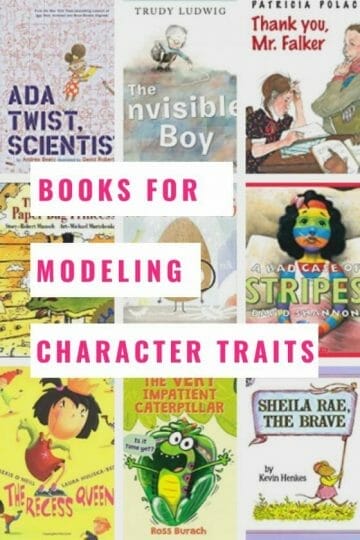
Here are my 10 favorite books for teaching students to identify character traits:
- Ada Twist, Scientist by Andrea Beaty
- The Paper Bag Princess by Robert Munsch
- The Recess Queen by Alexis O’Neill
- Thank You, Mr. Falker by Patricia Polacco
- The Invisible Boy by Trudy Ludwig
- The Very Impatient Caterpillar by Ross Burach
- A Bad Case of Stripes by David Shannon
- The Good Egg by Jory John
- Sheila Rae the Brave by Kevin Henkes
- Boundless Grace by Mary Hoffman
Before Reading: Introducing Character Traits
Character traits can be tricky for younger learners. In early readers, everything is spelled out for them, but character analysis asks students to read between the lines and make inferences based on clues in the text.
Start with the Basics
Begin by helping students define character traits. Use examples and non-examples to show what counts as a trait and what doesn’t. This helps build understanding from the start.
Clear Up Common Confusions
Students often mix up what a character looks like (appearance) with who they are (their personality and behavior). They also confuse temporary feelings with long-term traits.
Model the Difference
Try using yourself or a student volunteer to make it concrete.
- First, have students list physical attributes.
- Then, talk about personality traits.
- Compare the two lists to help them see the difference.
Visual Support
Anchor charts can make this lesson stick. Here’s a great example to use as you introduce this foundational concept in your classroom.
See more great examples of great character traits anchor charts.
Once you’ve practiced together as a class, have students work in small groups to try it on their own. They can describe themselves or a classmate using both physical and character traits.
The best part about this activity is that it doesn’t require any reading. Your struggling readers can focus on understanding the skill itself instead of spending all their energy decoding text.
To extend the lesson, create a class list of common character traits. You can also share and discuss this free Character Traits List PDF to help students build their vocabulary and give them a strong reference for future lessons.

If your students need a little extra practice before identifying traits in a text, try working backward. Give each student a specific trait and have them write about how a person with that trait might think, act, or speak to others. This helps them start noticing the kinds of clues authors include to show character traits.
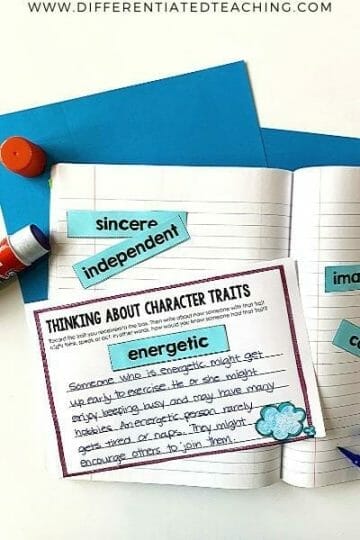
Transitioning to Text: Guided Practice
Once students understand what character traits are, it’s time to apply the skill in a short text.
Start with a picture book as a mentor text. For upper elementary, I love using A Bad Case of Stripes by David Shannon. For younger students or shorter attention spans, No, David! is a fun alternative.
As you read, have students notice the main character’s thoughts, words, actions, and feelings. Pause to talk about what traits they can infer along the way.

After reading, use the free flipbooks to help students record the traits they noticed. Under each flap, have them include text evidence to support their thinking.
Depending on the book you choose, this can also be a good time to talk about positive and negative traits. Use the included cut-and-paste activity to sort traits into three categories: positive, negative, and neutral. It’s an easy way to deepen discussion and reinforce vocabulary.
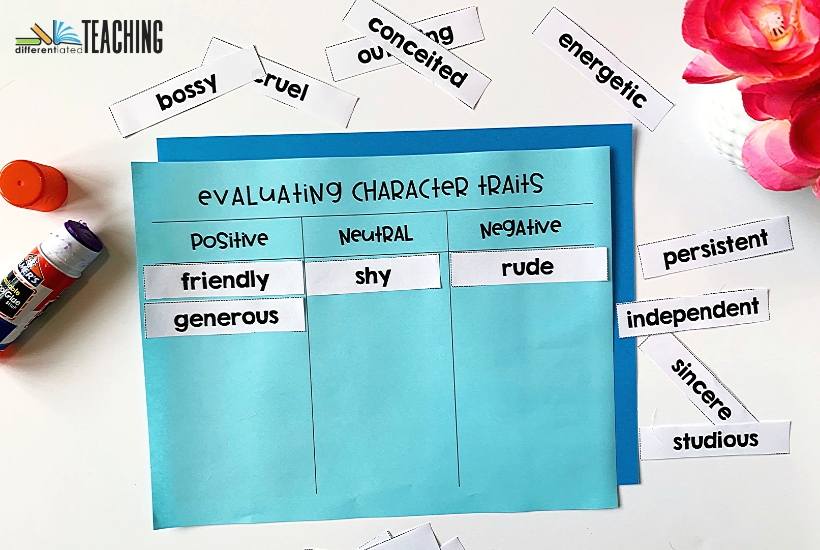
Independent Practice Options
Once students have a solid grasp of this skill, there are lots of ways to weave it into independent practice.
A simple starting point is to have students discuss character traits during literature circles or guided reading. You can use the free graphic organizer included to help them organize their thoughts and record text evidence from their book.
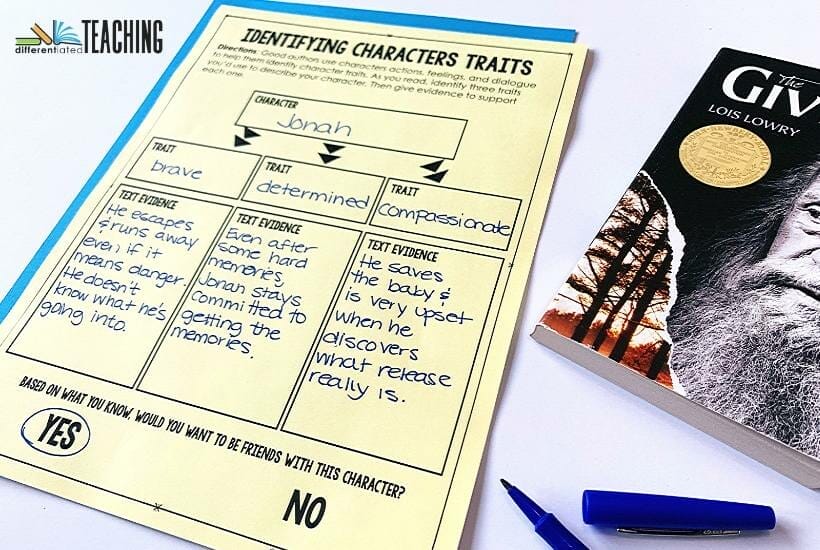
Here are a few ways you can offer some fun additional practice:
- Use free online games to practice the skill & keep students engaged
- Use task cards to have students practice identifying traits
- Have students create a Wordle for a character in a book they’ve read
Grab the free resources for teaching character traits
Now that you’ve read about how you can get students to think deeply about characters and their traits, I’m sure you’re ready to tackle this in your classroom.
That’s why I created a set of free resources for teaching this skill. In this free pack, you’ll find:
- Character traits list for reading journals
- Graphic organizers – internal vs. external, text evidence, comparing characters
- Comparing characters graphic organizer
- Character trait writing task – differentiated options available
- Trait sort – positive, negative, and neutral traits


